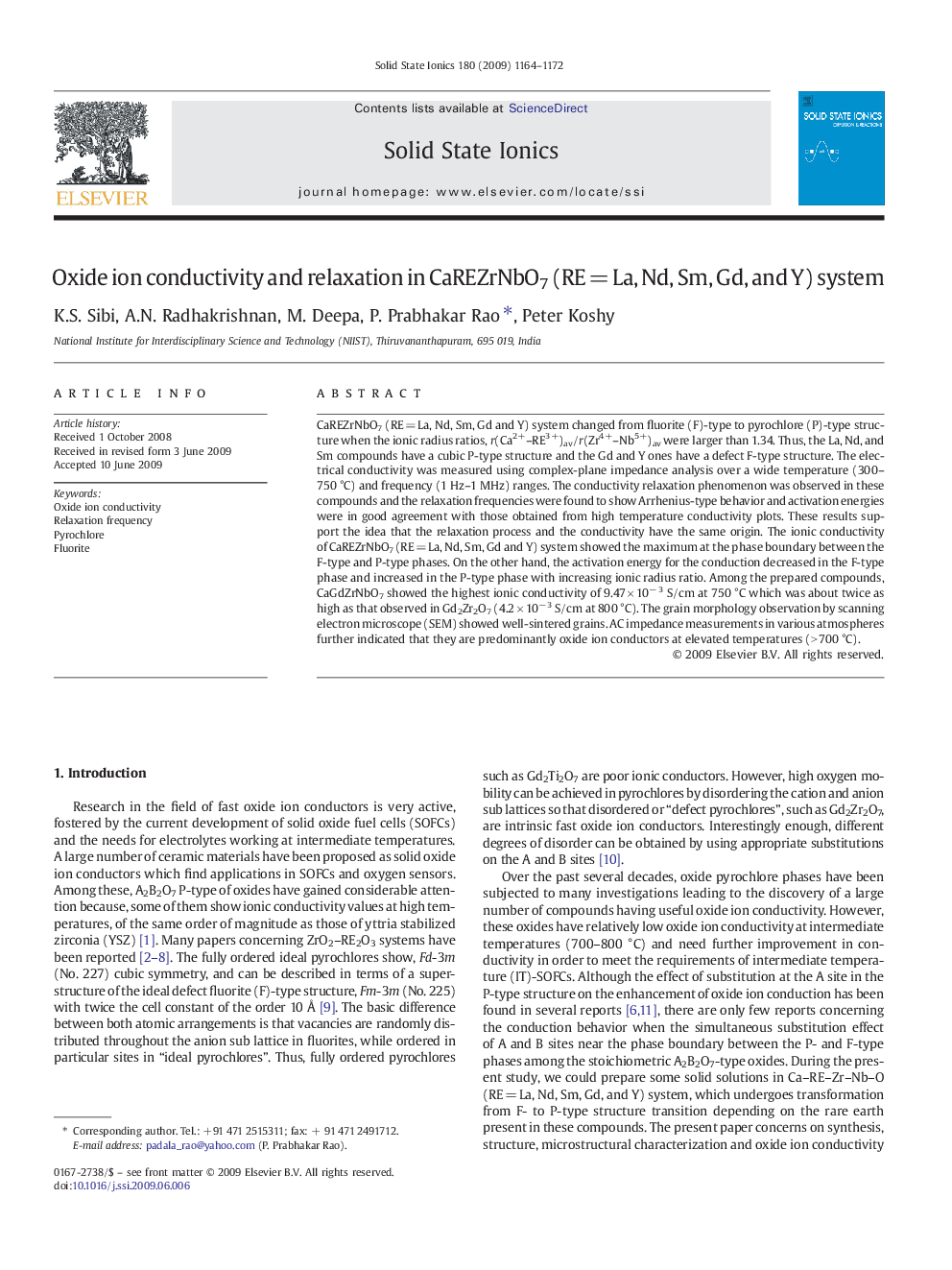| Article ID | Journal | Published Year | Pages | File Type |
|---|---|---|---|---|
| 1296818 | Solid State Ionics | 2009 | 9 Pages |
Abstract
CaREZrNbO7 (RE = La, Nd, Sm, Gd and Y) system changed from fluorite (F)-type to pyrochlore (P)-type structure when the ionic radius ratios, r(Ca2+-RE3+)av/r(Zr4+-Nb5+)av were larger than 1.34. Thus, the La, Nd, and Sm compounds have a cubic P-type structure and the Gd and Y ones have a defect F-type structure. The electrical conductivity was measured using complex-plane impedance analysis over a wide temperature (300-750 °C) and frequency (1 Hz-1 MHz) ranges. The conductivity relaxation phenomenon was observed in these compounds and the relaxation frequencies were found to show Arrhenius-type behavior and activation energies were in good agreement with those obtained from high temperature conductivity plots. These results support the idea that the relaxation process and the conductivity have the same origin. The ionic conductivity of CaREZrNbO7 (RE = La, Nd, Sm, Gd and Y) system showed the maximum at the phase boundary between the F-type and P-type phases. On the other hand, the activation energy for the conduction decreased in the F-type phase and increased in the P-type phase with increasing ionic radius ratio. Among the prepared compounds, CaGdZrNbO7 showed the highest ionic conductivity of 9.47 Ã 10â 3 S/cm at 750 °C which was about twice as high as that observed in Gd2Zr2O7 (4.2 Ã 10â 3 S/cm at 800 °C). The grain morphology observation by scanning electron microscope (SEM) showed well-sintered grains. AC impedance measurements in various atmospheres further indicated that they are predominantly oxide ion conductors at elevated temperatures (> 700 °C).
Related Topics
Physical Sciences and Engineering
Chemistry
Electrochemistry
Authors
K.S. Sibi, A.N. Radhakrishnan, M. Deepa, P. Prabhakar Rao, Peter Koshy,
